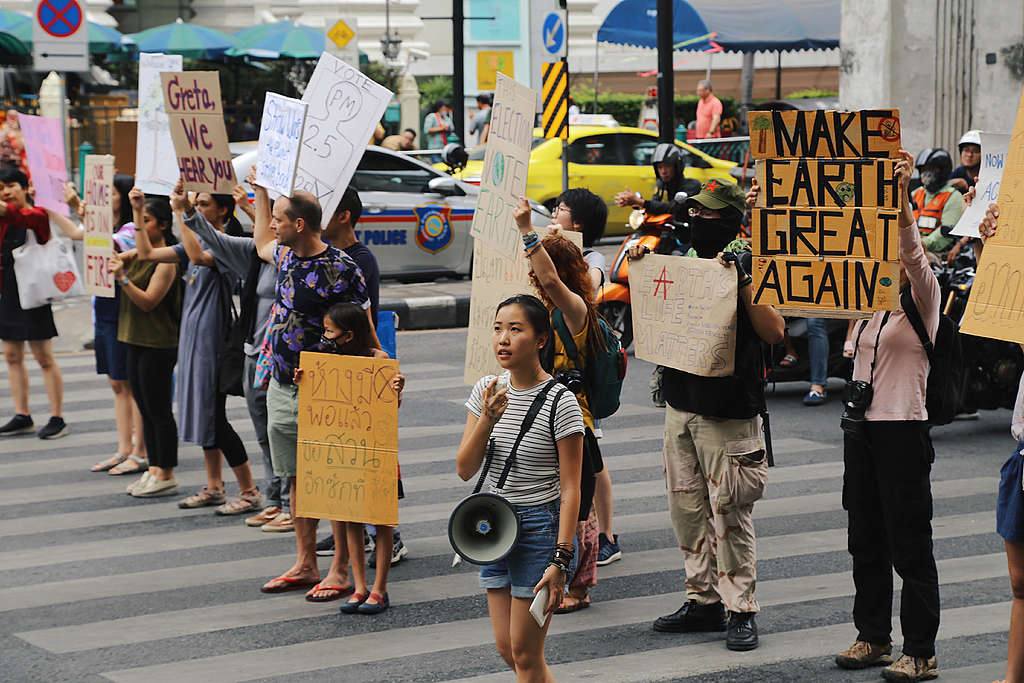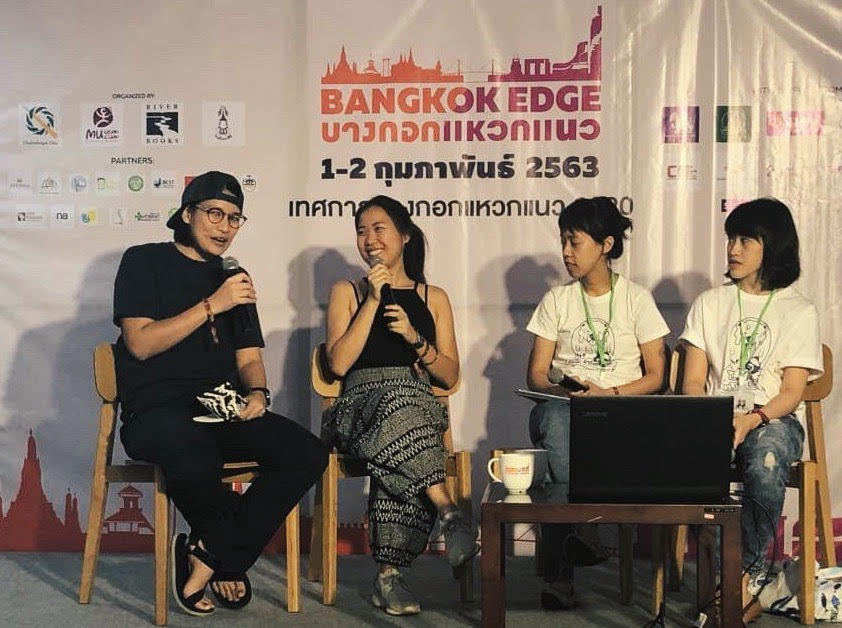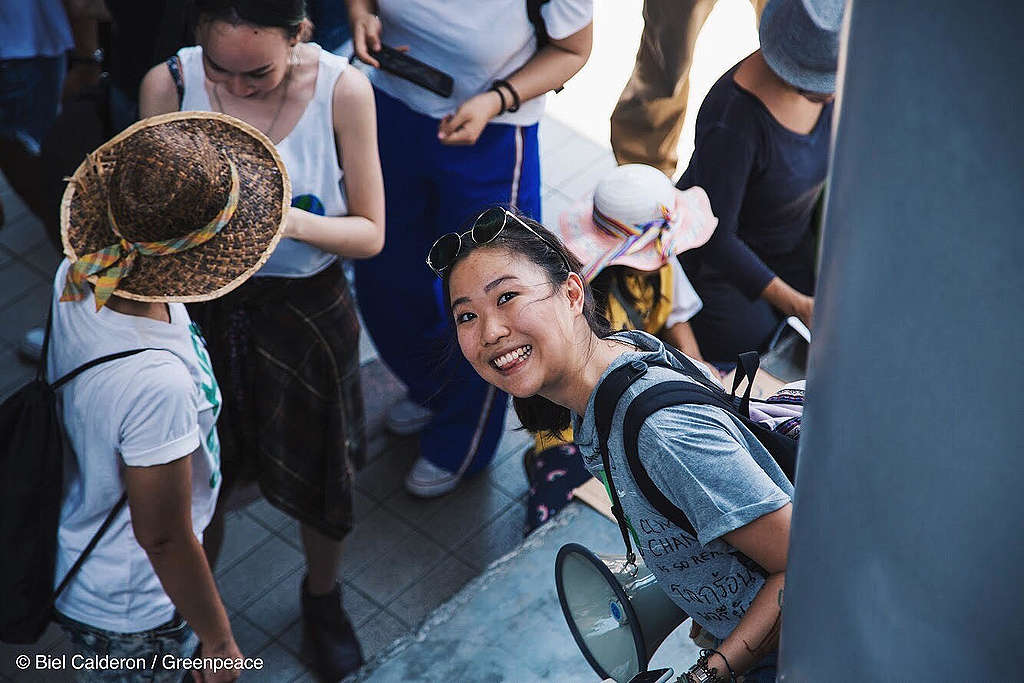by
Nanticha Ocharoenchai
Climate activism isn’t as fun as it used to be.
I remember the first time I striked–revving up the crowd was fun, and
so was chanting for climate justice with a group of strangers. But long
gone are those days. Climate Strike Thailand, the group I launched,
grew bigger and it seemed like it was finally making the difference I
had hoped for. But creating change meant fixing a problem, and fixing a
problem meant facing the complexities of environmental policy and
political drama.
 © Nanticha Ocharoenchai
© Nanticha Ocharoenchai
Change also came with the stress of meeting with volunteers, media
interviews, events and managing social media platforms. Besides the
physical tasks needed done, I also had to mentally cope with the
incredibly depressing mornings of waking up to the fear of dying from
climate change, and horrifying nights of also waking up to anxiety
attacks of feeling too powerless and exhausted to stop the crisis.
On many of those nights, I wondered if other people ever felt the
same way. I remember thinking about Kotchakorn Voraakhom, a landscape
architect whose firm I write for, and wondering if she ever felt
hopeless. Kotchakorn and her team work extensively on climate impacts on
sinking cities–she was among the “
15 women leading the fight against climate change
” on TIME Magazine–focused on designing infrastructure which
adds green space to Bangkok and other delta cities across Southeast
Asia. I wondered if knowing too much about the problem and trying too
hard to solve it had ever killed her optimistic vision of the future,
the same way it did to mine.
 © Nanticha Ocharoenchai
The answer was pretty obvious–yes, very much so and you could see it
on her face almost every time you’d meet her. But did that mean she ever
wanted to give up? Not really. Sure, problem-solving is difficult, but
besides that, what else is there to do?
© Nanticha Ocharoenchai
The answer was pretty obvious–yes, very much so and you could see it
on her face almost every time you’d meet her. But did that mean she ever
wanted to give up? Not really. Sure, problem-solving is difficult, but
besides that, what else is there to do?
Problems can be fun to solve, too–at least that’s what my mom
believes. As a businesswoman, her days are comprised of problem-solving,
which was fun for her. Growing up, I was also taught to be productive
and resourceful, to be able to turn any disaster into an opportunity and
transform any adversity into an asset.
 © Nanticha Ocharoenchai
Either the mentality grew on me, or it was always there. On many
nights, I’d fall asleep on the idea of bailing on our planet–but the
next morning, I’d always wake up feeling unable to turn a blind eye on a
problem I’m fully aware of. I wasn’t sure what to do with that
love-hate relationship with climate activism. It was hard to give up in
spite of all the challenges, because there was always a bleak sense of
hope that maybe I could actually create change. It was even harder to
sit still and watch the world burn, when you knew where the water might
be.
© Nanticha Ocharoenchai
Either the mentality grew on me, or it was always there. On many
nights, I’d fall asleep on the idea of bailing on our planet–but the
next morning, I’d always wake up feeling unable to turn a blind eye on a
problem I’m fully aware of. I wasn’t sure what to do with that
love-hate relationship with climate activism. It was hard to give up in
spite of all the challenges, because there was always a bleak sense of
hope that maybe I could actually create change. It was even harder to
sit still and watch the world burn, when you knew where the water might
be.
Like the mistakes my mom turned into lessons, I began turning the
climate activism work I began to hate into something I enjoyed learning
about with a small team with people I love. Now back on track, I am
exploring how to combine storytelling–a passion strayed from during my
first months of climate activism–and climate advocacy together to create
emotionally-captivating narratives sharing the voices that deserved to
be heard through writing, film and photography.
 Like everything else in life–as I’ve learned from the women in my
life–climate activism has its lows, and you just have to learn how to
get back up. Regardless of whether it works or not, you at least try.
Looking back on the work I’ve achieved so far, I’ve not only learned
ways to carry forth my mission, but also to give myself enough credit
for it, so that I can inspire myself just as much as the women in my
life have.
Like everything else in life–as I’ve learned from the women in my
life–climate activism has its lows, and you just have to learn how to
get back up. Regardless of whether it works or not, you at least try.
Looking back on the work I’ve achieved so far, I’ve not only learned
ways to carry forth my mission, but also to give myself enough credit
for it, so that I can inspire myself just as much as the women in my
life have.
Nanticha Ocharoenchai, 22, is an environmental writer and climate activist of Climate Strike Thailand.





No comments:
Post a Comment
Note: Only a member of this blog may post a comment.